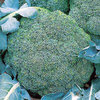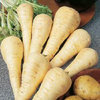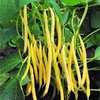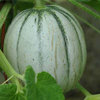Product Categories Vegetable Seeds D-P Kale Kale Borecole Dwarf Green Curled 500 Seeds
Product Categories Vegetable Seeds D-P Kale Nero Di Toscana Borecole Curly Kale Veggie Seeds
Product Categories Vegetable Seeds D-P Pak Choi Seeds Pak Choi Dwarf Canton White Vegetable Seeds
Product Categories Vegetable Seeds A-C Cabbage Cabbage Derby Day 30 Vegetable Seeds
Product Categories Vegetable Seeds A-C Cabbage Cabbage Durham Early 450 Spring Vegetable Seeds
Product Categories Vegetable Seeds A-C Cabbage Cabbage F1 Kilaton 10 Vegetable Seeds
Product Categories Vegetable Seeds A-C Cabbage Cabbage F1 Spring Hero 15 Vegetable Seeds
Product Categories Vegetable Seeds A-C Cabbage Cabbage Greyhound Pointed Heads 525 Veg Seeds
Product Categories Vegetable Seeds A-C Cabbage Cabbage January King 350 Winter Savoy Seeds
Product Categories Vegetable Seeds A-C Cabbage Red Cabbage Kalibos 200 Pointed Head Seeds
Kale Borecole Dwarf Green Curled 500 Seeds
Product no.: SEEDV005
In stock
Delivery period: 1 working days
Accessories
| Product | Note | Status | Price | |
|---|---|---|---|---|
|
Customers who bought this item also bought: |
|
£1.75 * | |
|
You may want to also consider this item: |
|
£1.24 * | |
|
Other items you may also want to consider: |
|
from £0.88 * | |
|
* Prices plus VAT, plus delivery
Display accessory details
|
||||
We also recommend
|
You may want to also consider this item:
|
* Prices plus VAT, plus delivery
Customers who bought this product also bought
|
Nero Di Toscana Borecole Curly Kale Veggie Seeds
from
£0.91
*
|
|
|
|
Dwarf French Bean Safari Vegetable Seeds
from
£0.86
*
|
Pea Early Onward Pisum Sativum Vegetable Seeds
from
£0.86
*
|
* Prices plus VAT, plus delivery
Browse these categories as well: Kale, Cabbage
Nero Di Toscana Borecole Curly Kale Veggie Seeds
Product no.: SEEDV006
In stock
Delivery period: 1 working days
from
£0.91
Price plus VAT, plus delivery
Accessories
| Product | Note | Status | Price | |
|---|---|---|---|---|
|
Customers who bought this item also bought: |
|
£1.25 * | |
|
You may want to also consider this item: |
|
£0.77 * | |
|
Other items you may also want to consider: |
|
£0.89 * | |
|
* Prices plus VAT, plus delivery
Display accessory details
|
||||
We also recommend
|
Customers who bought this item also bought:
|
* Prices plus VAT, plus delivery
Customers who bought this product also bought
|
Carrot Rainbow Blend 400 Vegetable Seeds
from
£0.97
*
|
Kale Scarlet Borecole Vegetable/Fruit Seeds
from
£1.06
*
|
|
|
|
|
* Prices plus VAT, plus delivery
Browse these categories as well: Kale, Cabbage
Pak Choi Dwarf Canton White Vegetable Seeds
Product no.: SEEDV076
In stock
Delivery period: 1 working days
Accessories
| Product | Note | Status | Price | |
|---|---|---|---|---|
|
You may want to also consider this item: |
|
from £2.39 * | |
|
* Prices plus VAT, plus delivery
Display accessory details
|
||||
We also recommend
|
Customers who bought this item also bought:
|
You may want to also consider this item:
|
Other items you may also want to consider:
|
* Prices plus VAT, plus delivery
Customers who bought this product also bought
|
Nero Di Toscana Borecole Curly Kale Veggie Seeds
from
£0.91
*
|
|
|
|
|
|
* Prices plus VAT, plus delivery
Browse these categories as well: Pak Choi Seeds, Cabbage
Cabbage Derby Day 30 Vegetable Seeds
Product no.: SEEDV207Currently unavailable
Notify on availability
£1.15
Price plus VAT, plus delivery
Accessories
| Product | Note | Status | Price | |
|---|---|---|---|---|
|
Other items you may also want to consider: |
|
£10.36 * | |
|
* Prices plus VAT, plus delivery
Display accessory details
|
||||
We also recommend
|
Customers who bought this item also bought:
|
You may want to also consider this item:
|
* Prices plus VAT, plus delivery
Customers who bought this product also bought
|
|
|
Courgette, Tondo di Chiaro di Nizza Veggie Seeds
from
£1.08
*
|
|
|
|
* Prices plus VAT, plus delivery
Browse this category: Cabbage
Cabbage Durham Early 450 Spring Vegetable Seeds
Product no.: SEEDV209
In stock
Delivery period: 1 working days
Accessories
| Product | Note | Status | Price | |
|---|---|---|---|---|
|
Customers who bought this item also bought: |
|
||
| Display accessory details | ||||
We also recommend
|
Customers who bought this item also bought:
|
You may want to also consider this item:
|
Other items you may also want to consider:
|
* Prices plus VAT, plus delivery
Customers who bought this product also bought
|
Beetroot Boltardy 400 (3.73g's) Vegetable Seeds
from
£0.89
*
|
|
|
|
Broad Bean Aquadulce Claudia Vegetable Seeds
from
£1.10
*
|
5" Heavy Duty Plant Label with Pencil
from
£1.34
*
|
* Prices plus VAT, plus delivery
Browse this category: Cabbage
Cabbage F1 Kilaton 10 Vegetable Seeds
Product no.: SEEDV210
In stock
Delivery period: 1 working days
We also recommend
|
Customers who bought this item also bought:
|
You may want to also consider this item:
|
Other items you may also want to consider:
|
* Prices plus VAT, plus delivery
Customers who bought this product also bought
|
Dwarf French Bean Safari Vegetable Seeds
from
£0.86
*
|
Cucumber F1 Burpless Tasty Green Vegetable Seeds
from
£1.06
*
|
|
|
|
Tomato Moneymaker Vegetable Seeds
from
£0.97
*
|
* Prices plus VAT, plus delivery
Browse this category: Cabbage
Cabbage F1 Spring Hero 15 Vegetable Seeds
Product no.: SEEDV212
In stock
Delivery period: 1 working days
Accessories
| Product | Note | Status | Price | |
|---|---|---|---|---|
|
Other items you may also want to consider: |
|
£8.41 * | |
|
* Prices plus VAT, plus delivery
Display accessory details
|
||||
We also recommend
|
You may want to also consider this item:
|
Other items you may also want to consider:
|
* Prices plus VAT, plus delivery
Customers who bought this product also bought
|
Gherkin Parisian Pickling Vegetable Seeds
from
£0.88
*
|
Cucumber F1 Burpless Tasty Green Vegetable Seeds
from
£1.06
*
|
Carrot Rainbow Blend 400 Vegetable Seeds
from
£0.97
*
|
|
|
|
* Prices plus VAT, plus delivery
Browse this category: Cabbage
Cabbage Greyhound Pointed Heads 525 Veg Seeds
Product no.: SEEDV214
In stock
Delivery period: 1 working days
We also recommend
|
Customers who bought this item also bought:
|
Other items you may also want to consider:
|
* Prices plus VAT, plus delivery
Customers who bought this product also bought
|
|
Cucumber F1 Burpless Tasty Green Vegetable Seeds
from
£1.06
*
|
|
|
Climbing French Bean Blue Lake Stringless Seeds
from
£0.97
*
|
|
* Prices plus VAT, plus delivery
Browse this category: Cabbage
Cabbage January King 350 Winter Savoy Seeds
Product no.: SEEDV215
In stock
Delivery period: 1 working days
Accessories
| Product | Note | Status | Price | |
|---|---|---|---|---|
|
You may want to also consider this item: |
|
from £4.44 * | |
|
* Prices plus VAT, plus delivery
Display accessory details
|
||||
We also recommend
|
Customers who bought this item also bought:
|
You may want to also consider this item:
|
Other items you may also want to consider:
|
* Prices plus VAT, plus delivery
Customers who bought this product also bought
|
|
|
|
|
|
|
* Prices plus VAT, plus delivery
Browse this category: Cabbage
Red Cabbage Kalibos 200 Pointed Head Seeds
Product no.: SEEDV216
In stock
Delivery period: 1 working days
We also recommend
|
Customers who bought this item also bought:
|
You may want to also consider this item:
|
Other items you may also want to consider:
|
* Prices plus VAT, plus delivery
Customers who bought this product also bought
|
|
|
|
|
|
|
* Prices plus VAT, plus delivery
Browse this category: Cabbage














 Fennel Florence Mixed 125 (0.5g) Herb Seeds
Fennel Florence Mixed 125 (0.5g) Herb Seeds Lettuce Great Lake 659 - 1700 Vegetable Seeds
Lettuce Great Lake 659 - 1700 Vegetable Seeds Lettuce Herb Blend BabyLeaf Mix Vegetable Seeds
Lettuce Herb Blend BabyLeaf Mix Vegetable Seeds
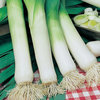

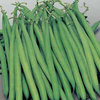
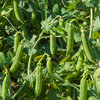


 Komatsuna Comred F1 Babyleaf Mustard Spinach
Komatsuna Comred F1 Babyleaf Mustard Spinach KohlRabi Giant Superschmelz Vegetable Seeds
KohlRabi Giant Superschmelz Vegetable Seeds Lettuce Tuscan Salad Mix 740 Vegetable Seeds
Lettuce Tuscan Salad Mix 740 Vegetable Seeds


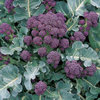

 Micro Irrigation Adjustable Drippers Sprinklers
Micro Irrigation Adjustable Drippers Sprinklers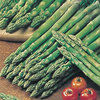
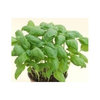
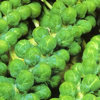
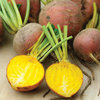





 5 x Propagator Sets Full Standard Seed Trays V40
5 x Propagator Sets Full Standard Seed Trays V40
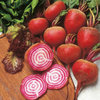






 10 x Early Strawberry Honeoye Bare Root Plants
10 x Early Strawberry Honeoye Bare Root Plants

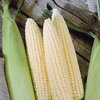
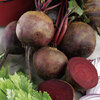
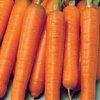
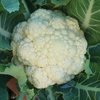



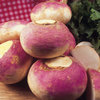
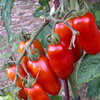
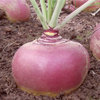
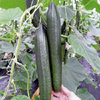
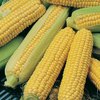



 20 x Jiffy Propagation Grow Blocks 85mm x 85mm
20 x Jiffy Propagation Grow Blocks 85mm x 85mm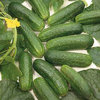










 20 Cell Self-Supporting Bedding Plant Packs
20 Cell Self-Supporting Bedding Plant Packs

